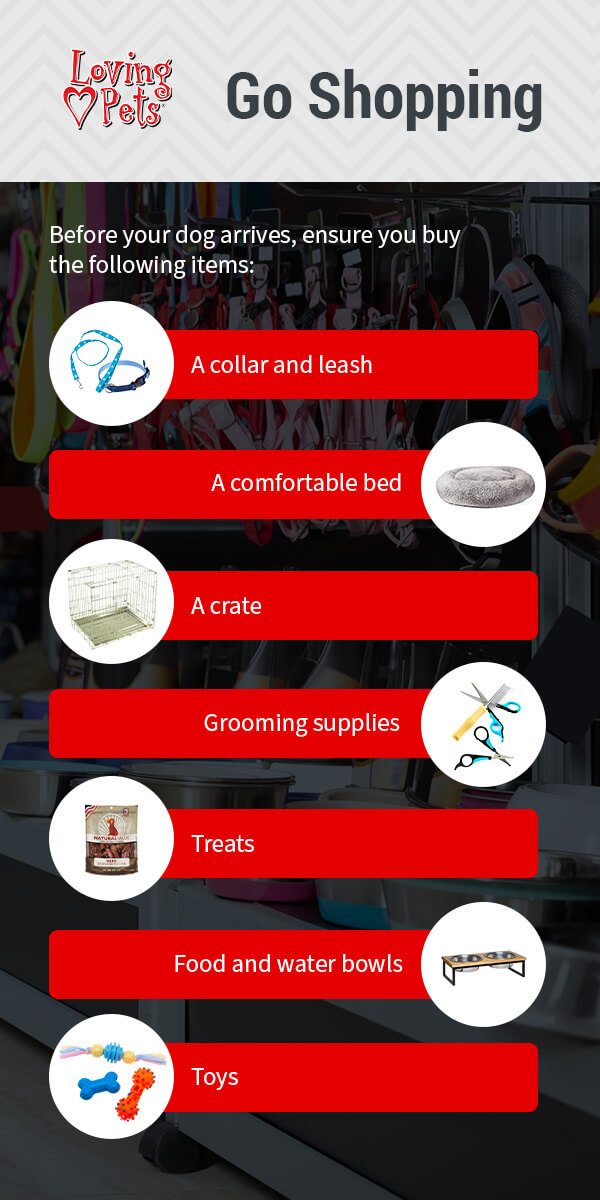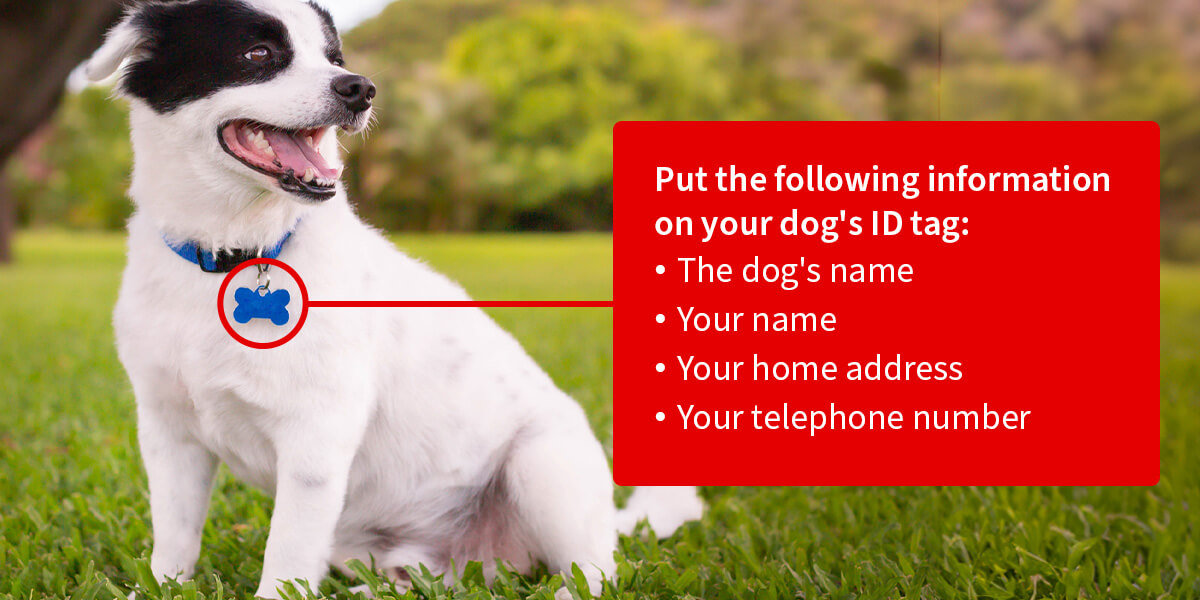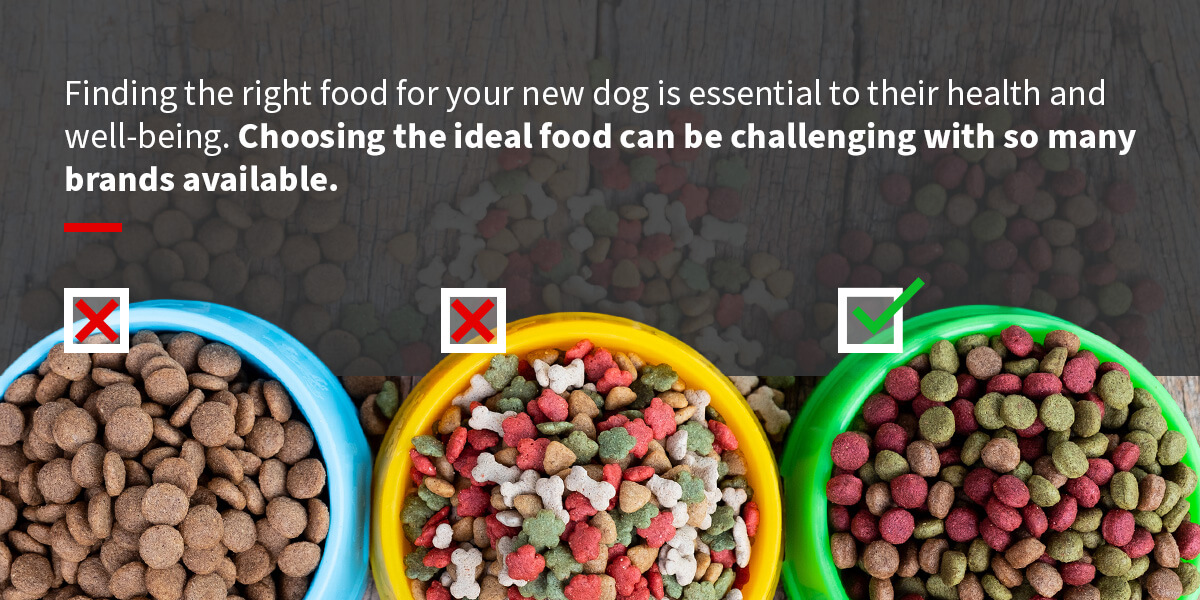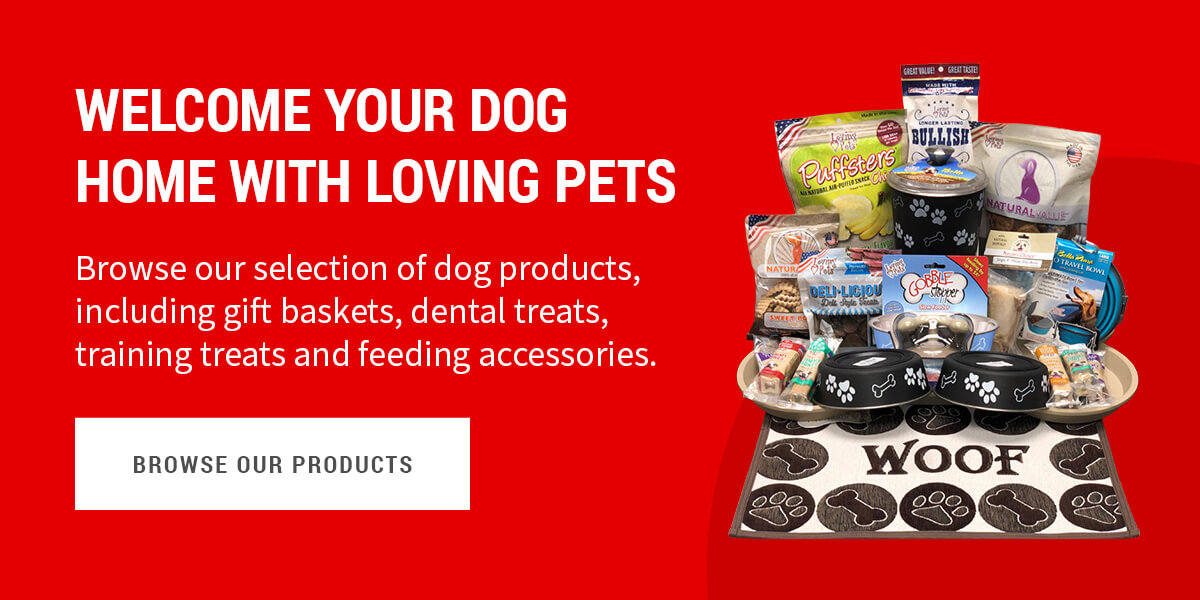How to Prepare for a New Dog in Your Home
Dogs are the most popular pets in the U.S., with homes in 66% of households. Dog ownership positively impacts your physical and mental health — some of the many reasons to adopt a dog and welcome them into your family. Getting a new dog brings so much joy into your home. Still, it comes with responsibilities, and many people are understandably determined to make the transition as smooth and easy as possible.
Knowing what to do before adopting a dog takes the stress out of the experience. It allows you to focus on the excitement of growing your furry family. Some quick preparation and a few key steps are all you need to ensure you're prepared for the new arrival.
11 Tips and Tricks for Adopting a New Dog
Getting a new dog is like bringing a baby home in many ways. You need designated spaces, special food, toys, beds, bowls and routines. If you buy what you need and lay out a routine beforehand, the adjustment period will be shorter for you and your new four-legged friend. Some things to know when adopting a dog include:
1. Choose a Dog That Fits Your Lifestyle
When considering getting a dog, one of the primary factors in your decision should be choosing a breed that suits your lifestyle and home. For example, German Shepherds are highly intelligent working dogs that need a lot of space and mental stimulation, which makes them unsuited to apartment living. Chihuahuas — the most popular breed in the U.S. — are ideal for smaller spaces but may not suit your needs if you want a dog to accompany you on grueling trail running expeditions.
Different dog breeds also have distinct character traits. Dachshunds are bred to dig, so protect your prize-winning garden. Golden Retrievers love to swim, so think about putting a fence around that swimming pool. The first step in your dog adoption journey should be researching different breeds to ensure you can handle your new friend's specific needs.
You may not have a particular breed in mind, choosing to adopt a rescue dog instead. In many cases, rescue dogs are mixed breeds. If you can identify the mix, you can use that information to decide on the right dog. If you plan to rescue a dog, find out as much as possible about them and ensure you can manage their needs.
2. Find the Perfect Dog Area
Whether you're adopting a puppy or an adult dog, you can expect lots of excitement and anxiety when they come into your home for the first time. Expect some housebreaking and behavioral incidents and take some steps to ease the damage. Dogs love having a safe space of their own, so set up a sleeping and eating area before your new dog arrives. You might also want your dog to have a separate play area.
Choose spaces that are easy to clean and decide beforehand if any spaces in your home should be off-limits. You can use baby gates to close them off. You might want to get some house training mats and scatter them around your "dog zones" to make the inevitable cleanup easier. Consider adding spill-proof dog mats in the eating area to limit the amount of scattered kibble.
3. Consider House Training
Unless you adopt a dog that's already housebroken, house training is your first significant dog ownership hurdle. Familiarize yourself with the different housebreaking stages to try and predict when your new dog needs to go outside. Accidents are bound to happen, but you can minimize the cleanup with regular trips outside. As a general rule, you should take your dog outside when:
- They wake up from a nap
- Before feeding times
- 20 minutes after they eat
- Before and after play or walk times
- After they drink
House training involves praising your dog when they go outside to relieve themselves. Choose where you would like your dog to go and take them to the same spot every time, rewarding them when they complete the desired action. Come prepared with plenty of healthy treats to reinforce the desired behavior until they learn that going outside is good.
4. Go Shopping

You and your new dog will be much happier if you have all the necessary equipment. Before your dog arrives, ensure you buy the following items:
- A collar and leash: Regardless of whether you plan on taking lots of walks, a collar and leash are essential for training and trips to the vet. If you're getting a puppy, look for adjustable sizes to keep using them as they grow.
- A comfortable bed: Choose your dog's bed based on their expected size. It may be big initially, but your dog should grow into their bed rather than grow out of it.
- A crate: Whether you plan to keep your dog in a crate or not, you may need one for car trips and other exceptional circumstances.
- Food and water bowls: Your dog should have separate bowls for food and water. It's also worth buying a travel feeder — a portable food and water bowl combination — for walks or trips to the bark.
- Grooming supplies: Ensure you have a brush and comb, shampoo, a toothbrush, canine toothpaste and some healthy dental sticks for your new dog.
- Toys: Puppies and adult dogs love toys. Try various types of toys to learn what your dog loves most.
- Treats: The early stages of getting to know your new dog involve establishing boundaries and teaching them the difference between acceptable and unacceptable behaviors. Stock up on plenty of healthy treats to use as positive reinforcement so you always have something delicious to reward your dog as they learn.
5. Make an Appointment With Your Vet
Choosing the right vet is a crucial part of pet ownership. Do some research to identify vets in your area, talk to friends and family with dogs and go through online reviews to create a shortlist of vets. Then consider what matters most to you, like seeing the same vet every time you visit or how close the practice is to your home.
Set up an appointment with your vet soon after your new dog arrives. Ask for a general health check and vaccinations, as well as deworming and tick and flea medication, if necessary. Depending on where your dog comes from, they'll likely already have a microchip. If not, request a microchip as part of your appointment. If you already have pets at home, double-check that they are all up to date with vaccinations and dewormer before bringing another dog into the mix.
Your dog may already be sterilized when they arrive. If you adopt a puppy, they may still be too young. Discuss sterilization with your vet in your first appointment. They will be able to tell you when to do the procedure. They'll also send you reminders when your dog is due for booster vaccinations.
6. Get Your New Dog an ID
Many states and local municipalities require dogs to wear ID tags, rabies vaccination tags and state licenses on their collars. Check your local bylaws to ensure you have everything you need. Even if your dog has a microchip, an ID tag is an extra precaution in case they escape or get lost.


Put the following information on your dog's ID tag:
- The dog's name
- Your name
- Your home address
- Your telephone number
7. Think About Pet Insurance
Despite your best efforts, accidents and health conditions are often part of pet ownership. You want to know that you can cover veterinary expenses if your dog gets sick or injured. Pet insurance plans can relieve some of the financial burden and give you peace of mind as a new pet owner.
Many different pet insurance plans exist. Some will cover everything for a monthly fee, from regular checkups to emergency surgery. Others cover a portion of the expenses. Some have breed exclusions — they don't cover medical conditions common in a specific breed.
Research your providers carefully and know what cover your dog will receive. Once you've found a provider that suits your needs and budget, double-check that your chosen vet accepts payments from them before you make your decision.
8. Map Out a Routine
Dogs thrive on routine, and having a general idea of how your lives will work can go a long way. Take time to get organized and think about when you'll complete specific dog ownership tasks. Depending on your dog's age and size, they will need to eat twice a day, get at least an hour of daily play or exercise and have plenty of house training breaks.
Plot these activities into your day and try to follow your routine whenever possible. As your dog settles in, they will anticipate certain activities, particularly handy during house training.
While mapping out your new routine, consider your boundaries with your new canine companion. Avoid any gray areas when integrating a new dog into your lifestyle. For example, they are either allowed on your furniture or not. Tell everyone in your house about these boundaries and ensure they stick to them to avoid confusion.
9. Prepare Your Children
It's important to remember that dogs and human beings communicate differently. Growling and even snapping are normal forms of canine communication, especially in response to fear, anxiety and discomfort. Dogs may perceive certain loving human behaviors as threatening, such as sudden kissing, hugging or climbing.
Educate everyone in your family about interacting with your dog, especially children. Some tips and tricks for interacting with your dog include:
- Refraining from kissing, hugging and other overt displays of affection.
- Speaking quietly.
- Avoiding the dog's designated safe space.
- Teaching children not to pull the dog's tail or ears.
- Understanding the signs of fear in your dog, like growling, lip licking and a tucked-in tail.
- Leaving your dog alone when they are eating.
10. Gather a Support System
Despite your best intentions, last-minute schedule changes, work trips and family responsibilities will crop up. Gather referrals for dog walkers, pet sitters, groomers and willing friends or neighbors. Write down their contact details and place them where everyone in the family can find them. If something unexpected happens, you can make a few quick calls and have someone reliable and trustworthy care for your pet.
11. Find the Right Food

Finding the right food for your new dog is essential to their health and well-being. Choosing the ideal food can be challenging with so many brands available. It should match your dog's size, breed, age and activity level. Check with your vet if your dog has any specific requirements before making your final selection.
A rapid change from one food to another can upset your dog's stomach. Find out what food your dog is eating and wean them off slowly. Start by replacing small amounts of their current food with new food, and continue adding more food gradually until your dog is completely happy eating it.
How to Prepare Your Home Before Getting a New Dog
Preparing your living space is essential when you're getting ready for a dog. Your home is full of hidden dangers, and you may need to reorganize before you welcome your new friend. Some steps you can take to "dog-proof" your home and garden include:
- Store personal items: Dogs are curious by nature. Since they explore with their mouths, you could find yourself short a pair of shoes here and there. Go through the areas where you keep personal items that could be within the dog's reach, such as the bottom of cupboards or low shelves. Store these items high up or put them in areas your dog can't access.
- Block the fireplace: Place a screen or grate before your fireplace to deter curious noses.
- Lock up your cleaning products and medications: Keep any chemicals, tools, plastic bags and sharp objects out of your dog's reach, either in inaccessible closets or a closed room.
- Redesign your coffee tables: Remove any small objects from your coffee tables, including books.
- Reorganize your plants: Keep indoor plants out of reach, especially lilies, irises and daffodils, which are toxic to dogs.
- Hide electrical equipment: Find a safe and secure space for items like TV remotes and smartphones. Avoid charging items in outlets near the floor. Remove the device so your dog can't reach dangling wires when you're done using an outlet. Bundle your cords and wires together and tape them to the walls.
- Clean up small items: Tiny items like paper clips, coins and pens can be choking hazards.
- Check the fences: A curious dog can find even the smallest hole or weaknesses in your fence. Many dogs also love to dig, so periodically check for signs of potential escape artists.
- Secure your fridge and pantry: Aside from the inconvenience of your dog raiding your weekly groceries, some human food is toxic to dogs, such as avocado, garlic, coffee and chocolate.
- Remove poisonous plants: You may unknowingly have toxic plants in your garden, like begonias, foxgloves, holly and sago palm. Scrutinize your garden and remove them before your new dog arrives.
Welcome Your Dog Home With Loving Pets
Getting a new dog is one of our most joyful and rewarding experiences. It can also be challenging, but teaching your new dog acceptable behaviors is the first step to a harmonious life together. Loving Pets Corporation has been helping proud new pet owners welcome their furry friends since 2005. Our selection of high-quality treats and decorative, durable pet bowls and accessories is the perfect homecoming purchase.
Our dog treats are made here in the U.S. with quality, healthy ingredients. Best of all, dogs love them. When only the best products will do, look no further than loving pets. Browse our selection of dog products, including gift baskets, dental treats, training treats and feeding accessories. Feel free to contact us for more information and get off on the right foot with your new dog today.




